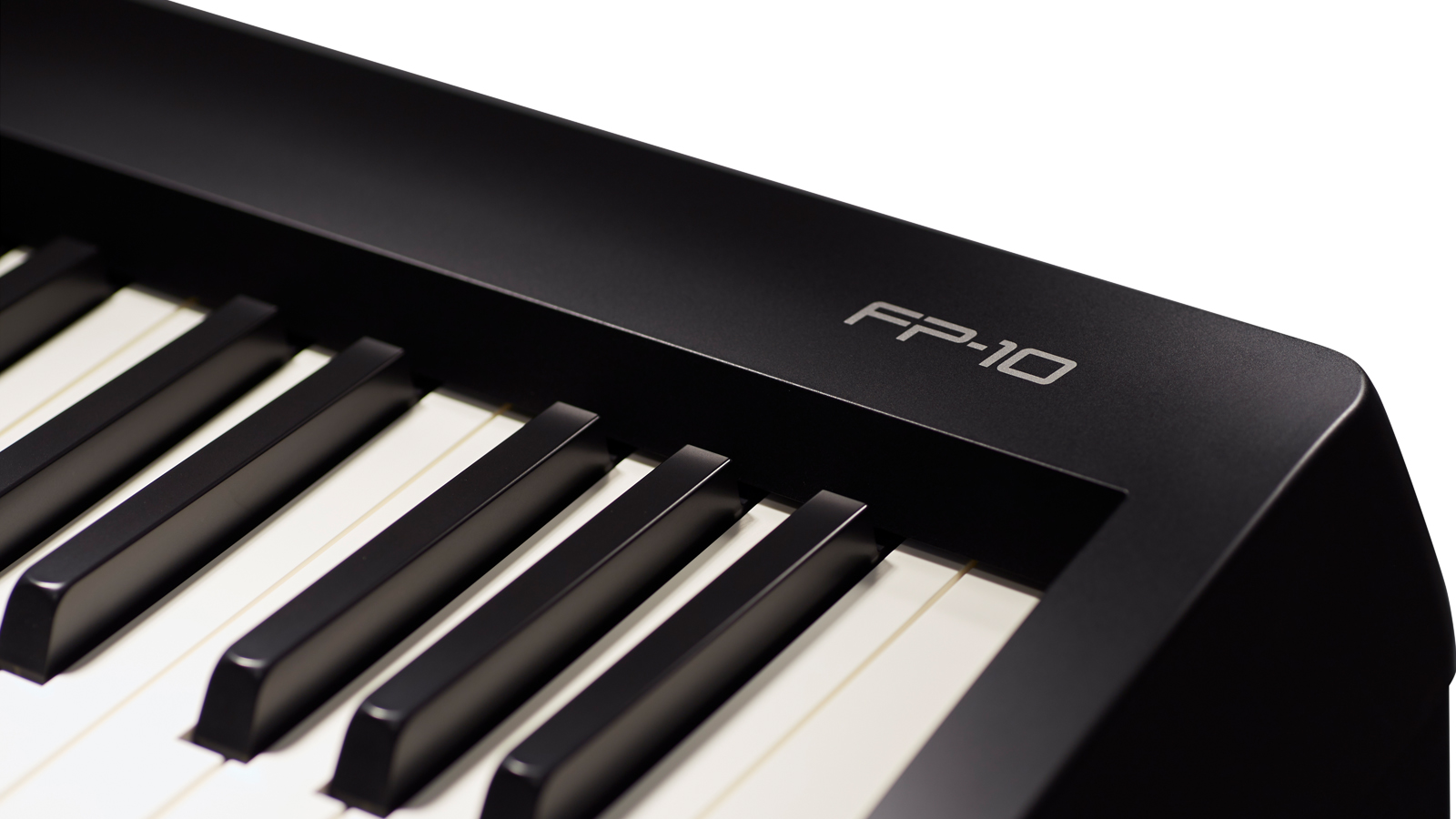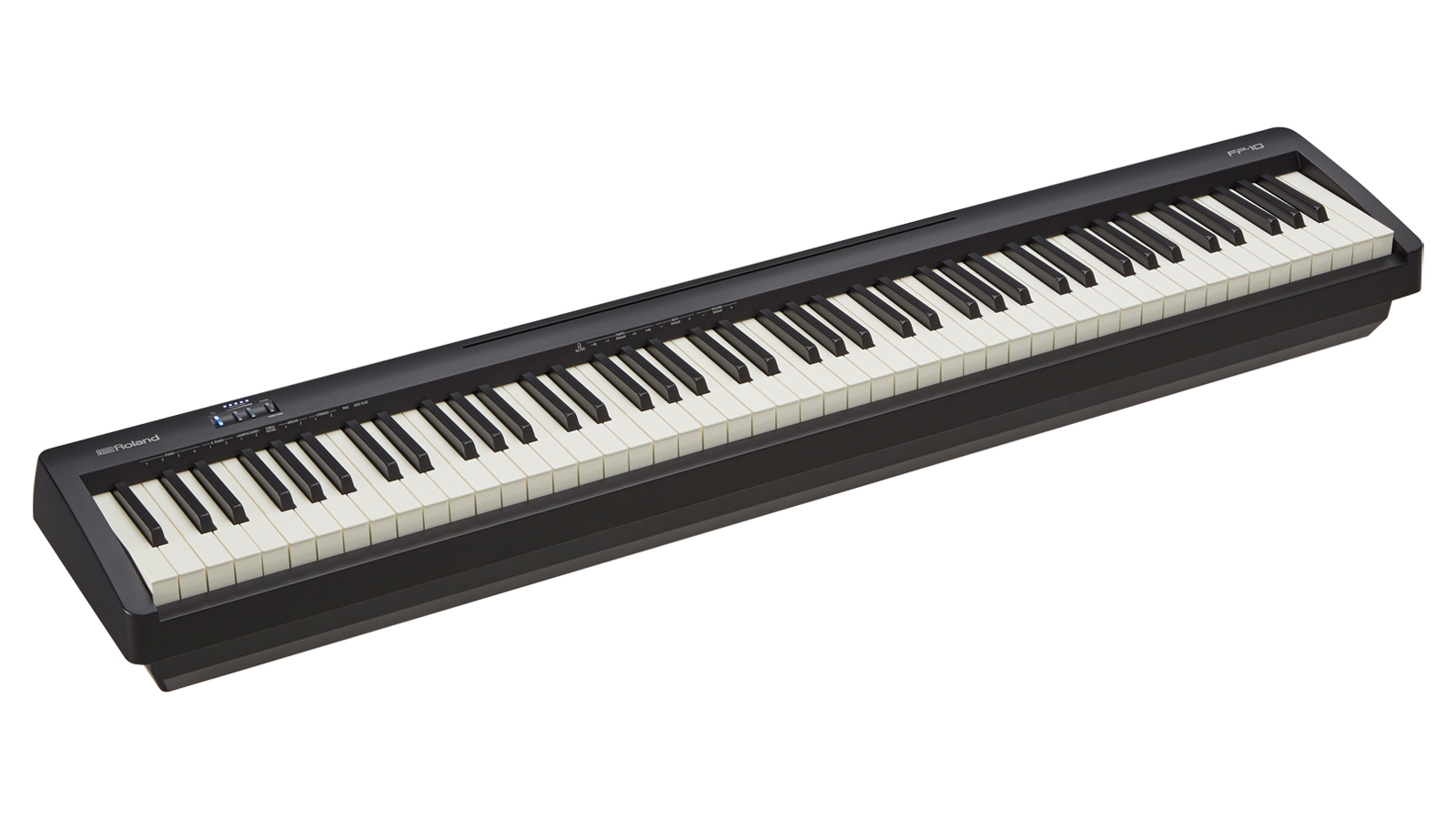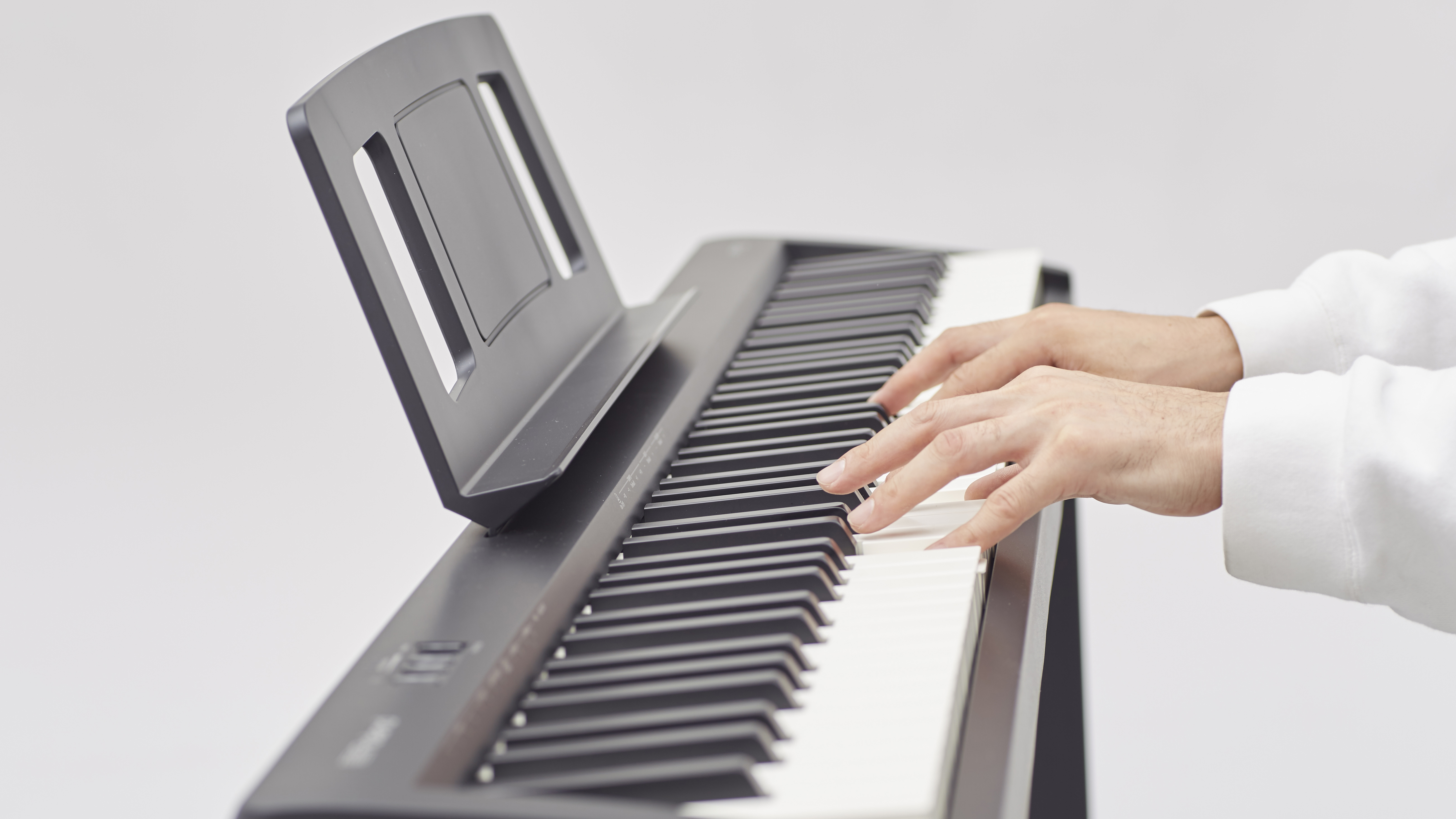MusicRadar Verdict
Adhering to the principle that simplicity is key, the FP-10 combines a superb piano sound and an excellent weighted keybed into an affordable, no-frills instrument that truly hits the target for beginners and intermediate players.
Pros
- +
Superb SuperNATURAL piano sounds
- +
Excellent PHA4 keybed
- +
Brilliant value
- +
Bluetooth MIDI
- +
Piano Partner app for extended functionality
Cons
- -
No dedicated line outs
- -
No Bluetooth audio capability
MusicRadar's got your back
Roland FP-10 digital piano review: What is it?

Roland’s FP line of portable digital pianos features a range of models to suit all budgets. To that end, the entry-level Roland FP-10 model aims to provide beginners and hobbyists with a premium acoustic piano sound, together with a high-quality weighted keyboard, all at an affordable price.
The foremost indicators of Roland’s no-compromise approach to the FP-10 are its wonderfully playable PHA4 keybed and SuperNatural sound engine. Identical to those found in much more expensive Roland models such as the HP702, finding these features in a beginner digital piano is a real bonus. All 88 keys are individually and progressively weighted, heavier at the low end and gradually becoming lighter towards the top. Furthermore, uniquely at this price point, there’s an escapement mechanism in there to enable the rapid playing of repeated notes, and the keys also have a very realistic ivory feel to the key-tops, so in terms of feeling like an acoustic piano, the FP-10 scores highly.
Among the narrowest in its class, the FP-10 has a very slim profile front to back but is also unusually tall for a digital keyboard, the deep casing accommodating the escapement mechanism and the two 6W downward-firing speakers. At 14cm, the height may pose an issue if you’re thinking of using it as a master MIDI keyboard to sit in a drawer under a tabletop. It’s a substantial unit at 12.3kg, but not so overweight as to rule it out as a portable instrument.
Connection-wise, the only audio output is a single 3.5mm headphone jack, the lack of separate line outs being the clearest indication yet that the FP-10 is aimed at the domestic user rather than the professional stage and studio musician. There are two USB ports - one for future firmware updates, the other to connect the FP-10 to your computer for use as a MIDI controller - and a damper pedal port. Although the FP-10 supports half-pedalling, the basic bundled foot switch doesn’t - you’ll need to invest in a compatible pedal like the Roland DP-10 to take advantage of this feature.
Roland FP-10 digital piano review: Performance & verdict

The FP-10’s top panel is a masterclass in minimalism, the only controls being four illuminated buttons on the left hand side - one for powering on, two for adjusting volume, and a fourth ‘piano function’ switch. When held down, this transforms the instrument’s keys into function selector switches, performing duties such as switching preset tones, controlling metronome settings, adjusting brilliance and ambience levels, master tuning and playback of demo songs. We’re not big fans of having to use the piano keys as switches for functions, but this arrangement presumably helps keep the overall cost of the unit down. It works well enough, but it’s a two-handed affair, and since there’s no display of any kind, changing sounds can be difficult in low light conditions.

Fifteen onboard sounds are provided, most prominent of which are the four acoustic pianos, which are of excellent quality but with seemingly only subtle differences in character. Full, rich and exquisitely detailed, the acoustic piano sounds are derived from the same SuperNatural sound set as Roland's more expensive models, meaning that advanced characteristics such as simulated sympathetic string resonance, damper resonance and key-off resonance are all present and correct.
Next up, there are two electric piano sounds, of which one is a Fender Rhodes sample and the other a DX7-style FM EPiano. There are two harpsichords, a vibraphone, a Hammond B3 jazz organ, a pipe organ, two string patches, a gorgeous soft analogue pad and the strange ‘jazz scat’ preset, a novelty collection of velocity-sensitive vocal samples that it’s hard to see being of any use to anyone after an initial ten minutes of hilarity. Sadly, there’s no onboard Wurlitzer EP200 preset - we’d have gladly forsaken the frankly bonkers jazz scat in favour of a decent Wurli sound accessible from the front panel.
Want all the hottest music and gear news, reviews, deals, features and more, direct to your inbox? Sign up here.

Sounds can be layered by pressing two of the keys to select two presets simultaneously - a feature known as ‘Dual Play’ - and there are some useful combinations to be explored in this way, such as acoustic piano and strings, or harpsichord and pad. You can also divide the keyboard into two ‘twin’ pianos, one on the left and one on the right so that two people can play the same pitch ranges, which is great for student/teacher interaction.
Howdy partner
When paired with Roland’s Piano Partner 2 app, the FP-10 starts to spread its wings a little. After a simple Bluetooth pairing procedure, the app turns your Bluetooth-enabled iOS or Android device into the large-screen touch display that the FP-10 lacks out of the box, the supplied music rest doubling nicely as a tablet stand. Not only do you now have touch control over all major settings and keyboard modes, but you suddenly have access to a further 21 hitherto undiscovered sounds, such as Ragtime Piano, a third, more Wurli-esque electric piano tone, plus a whole bunch of others including Harp, Celeste, Steel and Nylon Guitars, Choirs and more.
When paired with Roland’s Piano Partner 2 app, the FP-10 starts to spread its wings a little
Although there’s no onboard song recorder on the FP-10, you can use the Piano Partner app, or indeed any other DAW, to record MIDI performances over Bluetooth. Sadly though, there’s no Bluetooth audio feature to allow you to stream audio through the onboard speakers to play along to, as found on the Roland GO:PIANO.
The FP-10’s success has been highlighted by how hard it’s been to get hold of in some territories, demand outstripping supply over the course of the pandemic. And for good reason - the quality of the piano sounds and the excellent keybed make it a no-brainer at this price. That weighted PHA4 keyboard means that the FP-10 is no toy - this is a serious instrument, the action possibly a touch on the heavy side for smaller hands, but no more so than that of a real acoustic piano. So if you’re learning the piano, and if you can get hold of one, the exceptional FP-10 has to be near the top of your shopping list.
- Our pick of the best digital pianos under $1,000/£1,000
Roland FP-10 digital piano review: Hands-on demos
Andertons
Guitar Center
PMT
Roland FP-10 digital piano review: Specifications
- Keys: 88 keys with Ivory and Escapement Feel
- Touch Sensitivity: Adjustable
- Speaker System: 2 x 4.7", 2 x 6W Amp
- Pedal: Sustain Pedal input
- Presets: 4 Piano tones, 2 Electric piano tones and others
- Polyphony: 96 Notes
- Functions: Bluetooth Connectivity, App control, Metronome, Twin Piano Mode
- Audio Output: 1 x 3.5mm headphone jack
- Power: AC adapter
- Stand: Optional
- Color: White and Black
- Dimensions: 1,284 (W) x 258 (D) x 140 (H) mm
- Weight: 12.3 kg
- Contact: Roland
Dave has been making music with computers since 1988 and his engineering, programming and keyboard-playing has featured on recordings by artists including George Michael, Kylie and Gary Barlow. A music technology writer since 2007, he’s Computer Music’s long-serving songwriting and music theory columnist, iCreate magazine’s resident Logic Pro expert and a regular contributor to MusicRadar and Attack Magazine. He also lectures on synthesis at Leeds Conservatoire of Music and is the author of Avid Pro Tools Basics.




